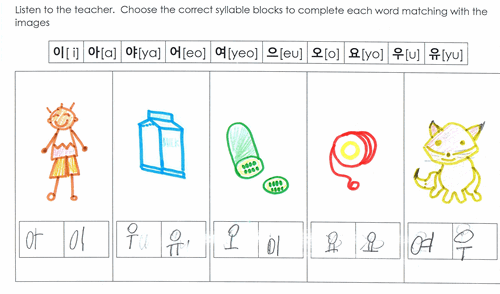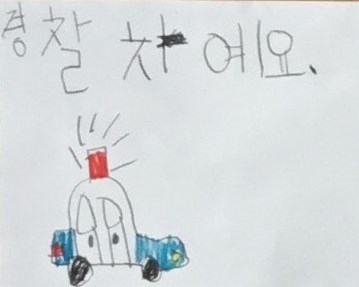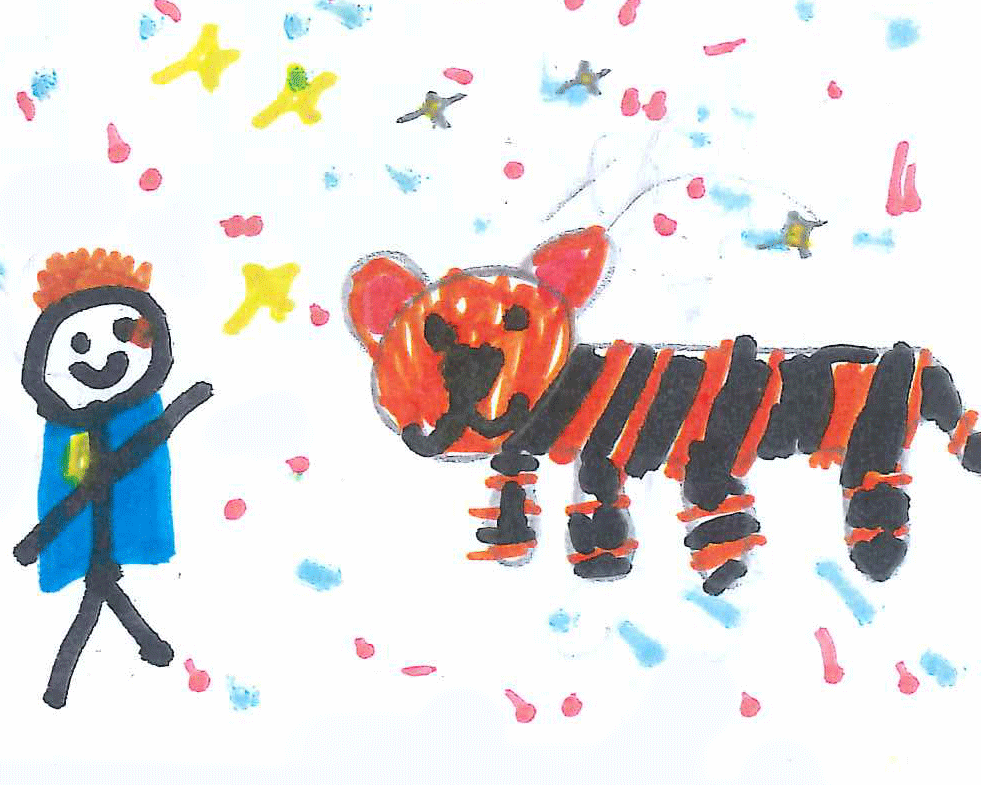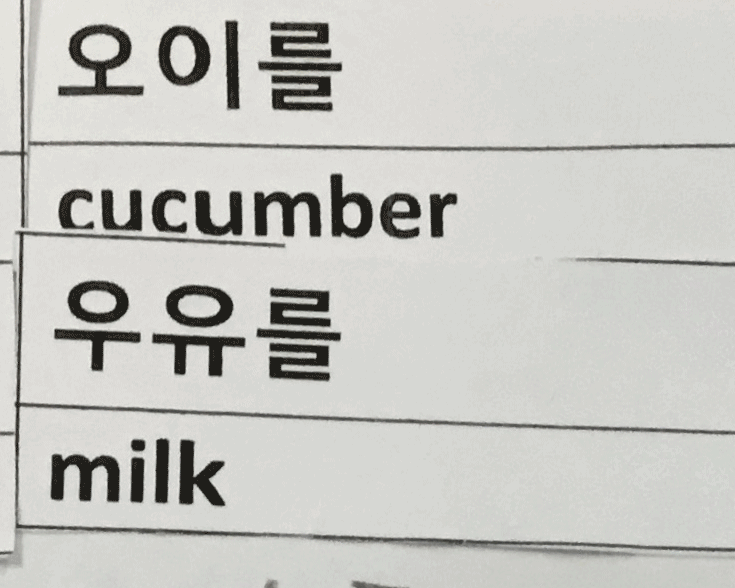By the end of Year 2, students interact with peers and teachers through play- and action-related talk, exchanging greetings and introducing themselves (for example, 안녕하세요?; 안녕?; 저는 ...이에요/예요 used as a set phrase) with gestures. They respond to question cues (such as 뭐예요?) by naming objects with single words (for example, 눈! 코! 입! 고양이!) or using short, simple sentences as set phrases (for example, 눈이에요, 고양이예요). They respond to teacher instructions such as 따라 하세요, 일어나세요 by imitating the teacher’s actions or speech, and to the teacher’s simple closed-ended questions by giving short answers such as 있어요/없어요 or 네/아니요. They make simple requests using … 주세요 and thank each other or the teacher using 고맙습니다 with appropriate gestures. They mimic and approximate Korean pronunciation of simple words, and locate and read specific words such as names of people or objects provided in familiar types of short texts. Students present simple information relating to themselves, their friends or everyday objects, using simple words and set phrases. They create and perform their own simple texts using modelled examples and formulaic language. Students use vocabulary related to their class and home environments. They use the personal pronoun 저, basic particles –은/는, –이/가 and –을/를as part of formulaic chunks ending with –어/아요 or –이에요/예요 (for example, 저는 고양이가 없어요). They match simple Korean and English texts written in Hangeul and English such as 로버트 and Robert, and identify familiar objects in both languages. Students explain aspects of Korean language and culture in everyday language use, such as ways of greeting and thanking, identify differences or similarities to their own language/s and culture/s, and discuss the experience of learning and using the Korean language.
Students discriminate Korean sounds and script from those of English and other languages. They identify the syllable block as the unit of writing and associate individual syllable blocks with their pronunciations. They identify their own names written in Korean using syllable blocks (for example, 로버트, 마크) and pronounce them using Korean sounds. Students identify –요 at the end of a sentence as indicating some polite meaning. They identify 저 as referring to self and 저는 as an equivalent to ‘I’ in a sentence. They choose between –이에요 and –예요 when they construct a sentence using a copula (for example, 재키예요; 마이클이에요). They identify Korean language as the language of Korea and as one of the many languages used in Australia and in the world. Students identify some loan words from other languages and Korean words used in Australia and other countries. Students identify differences and similarities between their own and others’ languages and cultures.







